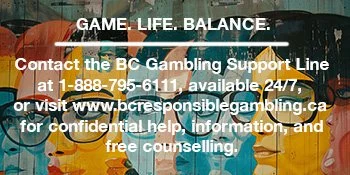What is Critical Race Theory?
by Jude Goodwin
Critical Race Theory in the Headlines
In January 2025, President Donald Trump signed an executive order declaring that Critical Race Theory, or CRT, is an “inherently racist policy.” The order stated that any K–12 school receiving federal funds must stop teaching CRT or lose that funding. It also banned what he described as the “indoctrination” of children with CRT and related gender ideology content. It also instructed federal agencies to cancel contracts and training programs that included CRT, white privilege training, or any material suggesting that the United States is inherently racist or unjust.
This is not just a U.S. event. Conservative opposition to CRT around the world often follows similar patterns. It is framed as a threat to national identity and cultural values. It is positioned as part of a broader wave of “wokeism” or progressive ideology, even in places where CRT is not explicitly taught. And it is frequently tied to efforts to limit how systemic racism and diversity are discussed in schools and public institutions.
I’ve been hearing a lot about this on various podcasts and news outlets and while I thought I probably understood what CRT was all about, I figured maybe it is time to take a good look. This article is one of a few where I examine political and theoretical discourse including ‘What is Woke’ and ‘What is DEI.’
Why do conservative narratives argue against the existence of systemic inequalities and against investment in policies that help reduce them?
What Is CRT?
Critical Race Theory began in the 1970s in U.S. law schools. Legal scholars like Derrick Bell, Kimberlé Crenshaw, and Richard Delgado were asking a simple but important question: why, after the passage of major civil rights laws, did racial inequality remain so deeply entrenched? Their answer was that law and policy are not created in a vacuum. They are built inside systems that already hold patterns of power, and those patterns shape the outcomes of laws long after they are written.
CRT is not a rigid set of rules. It is a way of looking at the world that asks how the past leaves marks on the present. Instead of focusing only on individual prejudice, it looks at how structures and institutions can carry inequality forward even when no one person intends harm.
And just a note on the meaning of ‘theory.’ In academic language, the word theory does not mean “a guess” or “something unproven.” A theory is a framework or set of ideas used to analyze and explain patterns.
Let’s look at some examples of where CRT is evident
Housing and the legacy of redlining
One of the clearest examples comes from housing policy. In the United States, from the 1930s through the 1960s, the Home Owners’ Loan Corporation created maps that labeled certain neighborhoods as “high risk” for mortgage lending. Predominantly Black neighborhoods were often marked in red, and banks routinely refused to issue loans there. For many Black families, that meant being locked out of home ownership and the long-term wealth building that came with it.
Canada did not use the same federal mapping system, but similar patterns existed. In cities like Vancouver, Edmonton, and parts of Ontario, racially restrictive covenants in property deeds barred Black, Chinese, South Asian, and Jewish families from buying homes in certain neighborhoods until the mid-20th century. These covenants shaped where people could live and, like in the U.S., created long-term patterns of wealth and segregation that have not fully disappeared.
Education and School Funding
Public education shows a similar pattern in both countries. In the U.S., school funding often comes from local property taxes, which ties resources to neighborhood wealth. In Canada, funding models vary by province, but a different historical factor comes into play: the long-term impact of residential schools and systemic underfunding of Indigenous education. For generations, Indigenous communities were denied equal access to quality schooling, creating gaps in resources and outcomes that are still being addressed today.
In both cases, the link between past policy and present opportunity is clear. CRT uses these examples to show how decisions made decades ago continue to shape educational outcomes now.
Law and Criminal Justice
The criminal justice system also reflects these patterns. For example, in the U.S., the 1980s sentencing guidelines punished crack cocaine offenses far more harshly than powder cocaine offenses, even though the drug itself is chemically similar in both forms. Crack was cheaper and more common in low-income, predominantly Black urban neighborhoods, while powder cocaine was used more often in affluent, largely white areas. The result was a dramatic racial gap in prison sentences created by a law that never mentioned race but had racially unequal outcomes because of the social and economic context in which it operated.
In Canada, a different but equally systemic pattern exists. Indigenous people make up less than 5 percent of the population but account for more than 30 percent of those incarcerated in federal prisons. This overrepresentation is tied to a long history of discriminatory laws, forced relocation, and systemic bias in policing and sentencing. CRT’s framework helps explain how those historical structures feed into present-day statistics even when the laws on the books are written to be race-neutral.
Past Actions and Modern Impact
At its heart, CRT rests on a simple truth: the past is not gone. Systems and laws leave marks that can last decades or even centuries. We see this in culture, in language, in traditions that survive long after their original context fades. It is no stretch to say the same thing about legal and institutional structures. What they built in the past shapes what we live with now.
Why do conservative politicians and people in power deny CRT so vehemently?
This is always one of my biggest questions. Why do conservatives hate Woke and DEI and CRT when they are so obviously key concepts needed to adjust inequality and balance in society?
The idea that inequality can exist without anyone intentionally creating it challenges the idea that solving racism is only about changing individual attitudes. For politicians and people in power, that is threatening for a few reasons:
Responsibility shifts to systems, not just individuals.
If laws, policies, and institutions carry inequality forward, then leaders have to admit that the structures they run are part of the problem. That creates pressure to change those systems, which can be costly, politically risky, or disruptive to the status quo.It challenges national identity.
In countries like the U.S. and Canada, there is a strong narrative that society is fundamentally fair and merit-based. Saying that inequality persists in the system itself sounds, to some, like saying the country itself is unfair. Politicians often fear that framing because it can be read as “unpatriotic” by parts of the electorate.It reframes power.
If inequality is structural, it means those who benefit from current systems are not neutral observers. They are part of the structure. For politicians, business leaders, or anyone in authority, that can feel like a personal accusation even though CRT’s point is about systems, not individuals.It changes the solutions.
If inequality is just individual prejudice, the answer is education, dialogue, or punishing a few bad actors. If inequality is structural, the solution is reforming laws, policies, and institutions. That means deeper changes, which often face political and economic pushback.
So the reason many in power argue against this point is not always because they deny history or evidence. It is often because accepting it implies a level of systemic responsibility that requires action beyond individual behavior, and that action can threaten existing power structures.
Is Capitalism the source of CRT?
Some scholars within CRT argue that race and capitalism are deeply linked because both systems were shaped by historical exploitation, including slavery and colonization. They point out that laws governing property, labor, and wealth were built during times when racial hierarchy was written into the economy itself. Others note that focusing only on individual effort, which is common in capitalist thinking, can hide the structural patterns that CRT tries to uncover.
It’s about history
The debate over CRT is not just about law or politics, it is also about memory. Humans have short lifespans, and as generations turn over, societies often forget how past systems shaped the present. Some historians argue that major patterns repeat every century because the people who lived through them are gone. This is why individuals and institutions need to work to remember and understand history, not as something distant but as something that still moves through the lives we lead today. When political narratives frame CRT as divisive or dangerous, it is worth asking what we lose if we stop looking at those patterns. Seeing how laws and systems carry the past forward is not about blame. It is about keeping the memory intact so the next cycle is not just a repeat of the last.
Jude Goodwin is a queer author and poet living in Vancouver BC. Jude is the publisher of What’s On Queer and can be reached at any time through email whatsonqueerbc@gmail.com










